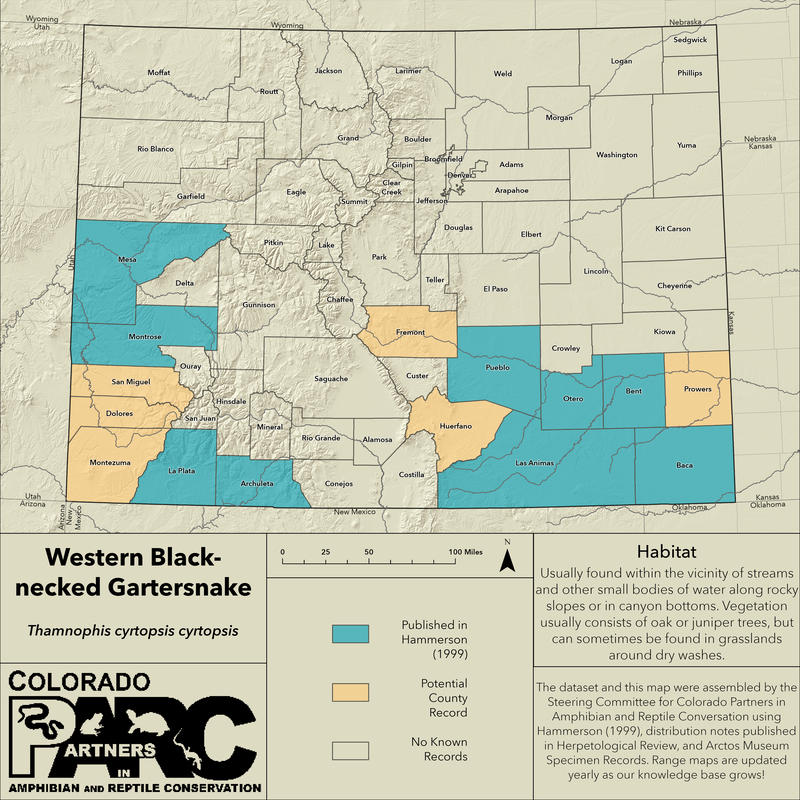|
Identification:
Distribution: In Colorado, Western Black-necked Gartersnakes occur in both southeastern Colorado and southwestern Colorado at elevations below 6,500 feet.
(Hammerson 1999) Activity: Activity generally occurs from mid-April through September. Western Black-necked Gartersnakes are cathemeral, as their activity will vary based on temperature and moisture. Brumation likely occurs from December through February. (Hammerson 1999)
Conservation Status: Designated as a non-game species in Colorado. In general, this snake is uncommon in Colorado, as it is sparsely distributed throughout the state. It is unlikely that its scarcity is due to habitat loss, degradation, or other observable factors. (Hammerson, 1999)
NatureServe rank: G5 (Globally Secure), S2 (State Imperiled). |
Habitat: Western Black-necked Gartersnakes are usually found within the vicinity of streams and other small bodies of water along rocky slopes or in canyon bottoms. Vegetation usually consists of oak or juniper trees, but can sometimes be found in grasslands around dry washes. (Hammerson, 1999)
Diet: The Western Black-necked Gartersnake is an opportunistic feeder, meaning they will eat a variety of prey. In general, this snake will feed on amphibians and their larvae, fish, and invertebrates. (Hammerson 1999)
Defense: When approached, this snake will flee across the land or through water. If handed, it will writhe about, secreting excrement from the cloacal sacs and may also bite. (Hammerson 1999)
Natural Predators: Coming soon!
|
Cited & Additional Resources
Hammerson G. A. 1999. Amphibians and Reptiles in Colorado. University Press Colorado, Boulder.
Hammerson G. A. 1999. Amphibians and Reptiles in Colorado. University Press Colorado, Boulder.
Account compiled by: Hayden Lewis
Reviewed by:
Last Updated: 1/30/2023 by Anthony Berardi
Reviewed by:
Last Updated: 1/30/2023 by Anthony Berardi


